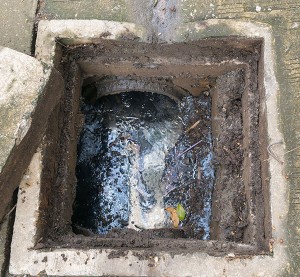CCTV Drainage Survey
Do you need a CCTV Drainage Survey and if so what does it involve?
As drainage problems are not always visible a CCTV Drainage Survey will deliver an extensive review and identify any major or minor issues. A camera drain survey will direct and locate the issue which may include blockages, cracks or any kind of structural damage. A survey can also identify issues caused by tree roots, displaced pipes and joints, badly installed drains, signs of wear and tear, corrosion and rodent infestations. The CCTV unit has a transmitter that sends images and data back to a monitor so that your plumber can identify the location of the problem.
A closed-circuit television camera will be inserted into the relevant drain in order to review the damage. The use of flexible rods can navigate bends or corners as the cameras can self-right this means that any rotation or twisting caused by the rods can be corrected.
A CCTV Drainage Survey can take up to three hours for an average three-bedroomed house though before surveys are carried out it is usual that high pressure jetting is carried out which can take up to one hour. This is carried out because a pipe may contain debris and material such as stones, tree roots, fat, oils and grease or silt. If these are not removed first the CCTV camera may not be able to travel through the pipe or record unobstructed images of the pipe which will need to be reviewed to assess the condition of the pipe.
Before purchasing a property a pre-purchase drain survey could save you money on the asking price of the property and also help you get a more competitive mortgage deal as there is less risk which could result in you paying less on your mortgage repayments. A CCTV Drainage Survey will show if there is subsidence to environmental damage. Should you purchase a house with poor drainage you could end up spending money on upgrades and improvements and eventually you could be looking at foundation problems and water damage.
How do you know if you have drainage problems?
- Cracks in the foundations
- Gushing gutters
- Deposits and flaking on the walls
- Migrating mulch
- Mildew in the attic
- Water stains in the basement
- Downspouts that dump
Full CCTV Drainage Surveys
The gathering of data helps the client to plan for urgent pipe repairs, rehabilitation or to support a planned preventative maintenance (PPM) programme:
This would include:
- A map of the drainage system showing main lines and lateral connections, plus manholes and surface water drains
- Lengths of pipes
- Pipe falls – this is a measurement of the gradient along the pipe
- Flow rates and flow directions along the pipes
- Location of pipe defects supported by HD-quality video
Other techniques used during a CCTV Drainage Survey are:
- GPS surveys
- 3D mapping
- Topographical surveys
Will house insurance cover blocked drains?
When purchasing your insurance policy check that it covers damage to underground pipes, cables, drains and underground services. Insurers will not cover problems with pipes owned by companies, neighbours or water companies even if the issues arise from them. 
CCTV Drainage Mapping
CCTV Drainage Surveys help to map the drainage and sewer systems. This should detail drain water flow direction, manholes and drain runs. Drain mapping can help find out where the boundaries lie, who has responsibility for the infrastructure and pinpoint any drainage pipes or sewage ahead of building work.
Before starting any building work it is important to know where nearby drains and sewers are and who has responsibility for them. It is the responsibility of the property owner to inspect the drainage infrastructure before any building work or property extension is to commence. Drain maps may be required to determine whether a ‘build over’ agreement is required.
What to expect from a CCTV Drainage Survey:
A CCTV Drain Survey Contractor should have the expertise and equipment to carry out the relevant survey. They should also:
- Assess drains have the relevant equipment used to complete the process
- Investigate the drains using CCTV using live feed and relevant software systems so survey reports can be provided in a timely manner with the correct data to suit the client’s needs.
- Have access to data gathering services, such as 3D mapping and topographic surveys
- Live feed should be uploaded to show the areas requiring repairs or others such as sewer cleaning
- Provide advice on services to resolve any drainage problems found


